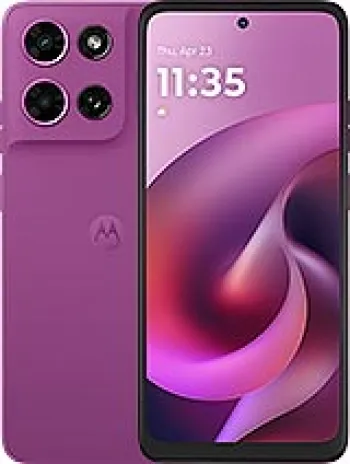
Overview of the Motorola EX128
The Motorola EX128, launched in October 2010, represents a notable entry in the feature phone market of its time. Designed to cater to basic communication needs while offering a few additional features, the EX128 is characterized by its simplicity and user-friendly nature.
Design and Body
The Motorola EX128 boasts a compact and lightweight design, measuring 107 x 57 x 12.8 mm and weighing just 80 grams. Its build makes it easy to carry and handle, particularly appealing to users who prioritize portability. The device is equipped with a mini-SIM slot and is available in classic black, giving it a sleek yet understated appearance.
Display
The phone features a 3.2-inch TFT resistive touchscreen offering 256K colors. Although modest by today’s standards, the display was quite sufficient for basic operations and casual media viewing during its release. With a resolution of 240 x 400 pixels and a 5:3 aspect ratio, the display provides a satisfactory user experience for its class.
Network Technology and Connectivity
Operating on GSM technology, the Motorola EX128 supports 2G bands, including GSM 850, 900, 1800, and 1900 on SIM 1. Although it lacks 3G or 4G capabilities, it offers GPRS and EDGE for data connectivity, which were adequate for the time. The inclusion of Bluetooth 2.1 with A2DP allows for wireless connections to other devices, while the microUSB 2.0 port facilitates physical data transfer and charging.
Camera Capabilities
The device includes a single 3.15 MP main camera capable of recording video at QCIF resolution at 15fps. While far from the high-resolution standards of modern smartphones, it served well for casual photography needs. The absence of a front-facing camera meant that the phone was not equipped for selfies or video calls, typical for devices of this era.
Memory and Storage
The Motorola EX128 provides a microSDHC slot for expandable storage, allowing users to store additional data beyond the built-in capacity. The phonebook can store up to 1000 entries, with the added functionality of photocall, while call records are maintained efficiently.
Battery Life
Powered by a removable Li-Ion 910 mAh battery, the EX128 offers up to 250 hours of standby time and up to 3 hours and 30 minutes of talk time. These specifications ensured that the device could last throughout the day with moderate use, aligning with the expectations for feature phones at the time.
Audio and Media
The phone includes a loudspeaker and a 3.5mm audio jack, facilitating audio playback through speakers or headphones. Additionally, it features a stereo FM radio with RDS, offering a popular source of entertainment for users who enjoy listening to music and radio broadcasts.
Software and Functionality
The EX128 operates on a feature phone platform, highlighting its focus on core functions with supplementary features. It supports SMS, MMS, and Email for communication, along with a WAP 2.0/xHTML browser for basic internet access. Java support (MIDP 2.0) and pre-installed games provide limited entertainment options.
Conclusion
The Motorola EX128 remains a representative example of early feature phones designed for simplicity and fundamental functionality. Its straightforward design, coupled with essential connectivity and basic multimedia capabilities, made it an appealing choice for users at the time. While it may not hold substantial appeal in today’s smartphone-centric market, the EX128 is a reflection of the transition period in mobile technology, bridging the gap between basic phones and emerging smart devices.
Key Features of Motorola EX128
- Lightweight design at only 80 g (2.82 oz)
- TFT resistive touchscreen with 256K colors
- 3.2-inch display with a resolution of 240 x 400 pixels
- Expandable storage via microSDHC card slot
- 3.15 MP main camera
- Stereo FM radio with RDS
- Bluetooth 2.1 with A2DP support
- Standard 3.5mm audio jack
- Removable Li-Ion 910 mAh battery
Disadvantages of Motorola EX128
- Lacks 3G, 4G, or any advanced connectivity technologies (only GSM available).
- Limited resistive touchscreen with 256K colors which might affect responsiveness and display quality.
- Low screen-to-body ratio of approximately 47.8%, making the screen feel smaller compared to modern devices.
- No Wi-Fi capability, which limits internet access options.
- Limited camera performance with only a 3.15 MP main camera and very low-resolution video recording (QCIF@15fps).
- Absence of a front-facing selfie camera.
- Lack of GPS, meaning no positioning or navigation features.
- Limited battery life with a talk time of up to 3 hours 30 minutes and standby time of up to 250 hours.
- Discontinued model, which means lack of support and updates.
- Basic WAP 2.0/xHTML browser limits modern web browsing experience.

View Also
More Phones
All Rights Reserved +14266 Phones © Mobilawy 2025

























